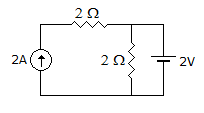Electronics and Communication Engineering - Electronic Devices and Circuits
Exercise : Electronic Devices and Circuits - Section 11
- Electronic Devices and Circuits - Section 14
- Electronic Devices and Circuits - Section 27
- Electronic Devices and Circuits - Section 26
- Electronic Devices and Circuits - Section 25
- Electronic Devices and Circuits - Section 24
- Electronic Devices and Circuits - Section 23
- Electronic Devices and Circuits - Section 22
- Electronic Devices and Circuits - Section 21
- Electronic Devices and Circuits - Section 20
- Electronic Devices and Circuits - Section 19
- Electronic Devices and Circuits - Section 18
- Electronic Devices and Circuits - Section 17
- Electronic Devices and Circuits - Section 16
- Electronic Devices and Circuits - Section 15
- Electronic Devices and Circuits - Section 1
- Electronic Devices and Circuits - Section 13
- Electronic Devices and Circuits - Section 12
- Electronic Devices and Circuits - Section 11
- Electronic Devices and Circuits - Section 10
- Electronic Devices and Circuits - Section 9
- Electronic Devices and Circuits - Section 8
- Electronic Devices and Circuits - Section 7
- Electronic Devices and Circuits - Section 6
- Electronic Devices and Circuits - Section 5
- Electronic Devices and Circuits - Section 4
- Electronic Devices and Circuits - Section 3
- Electronic Devices and Circuits - Section 2
1.
The circuit in figure, is to be scaled to an impedance level of 5kΩ and resonant frequency of 5 x 106 rad/sec. The possible combination of R, L, C is


Answer: Option
Explanation:
If L = 0.2 mH and C = 200 pF, ω0 = 5 x 106 rad/sec and if R is 5 kΩ, impedance level is 5 kΩ.
2.
In figure, the total power consumed is


Answer: Option
Explanation:
Use superposition theorem.
3.
If operator 'a' = 1 ∠120° then (1 + a) =
Answer: Option
Explanation:
Since 1 + a + a2 = 0, 1 + a = - a2.
4.
A current wave is i = 100e-60t The initial and final values of current are
Answer: Option
Explanation:
i(0) = 100 e-0 = 100, i(∞) = 100 e-∞ = 0.
5.
Assertion (A): The impedance of a series resonant circuit is minimum at resonance.
Reason (R): Resonance condition implies unity power factor condition.
Answer: Option
Explanation:
Since power factor is unity, impedance is minimum.
Quick links
Quantitative Aptitude
Verbal (English)
Reasoning
Programming
Interview
Placement Papers